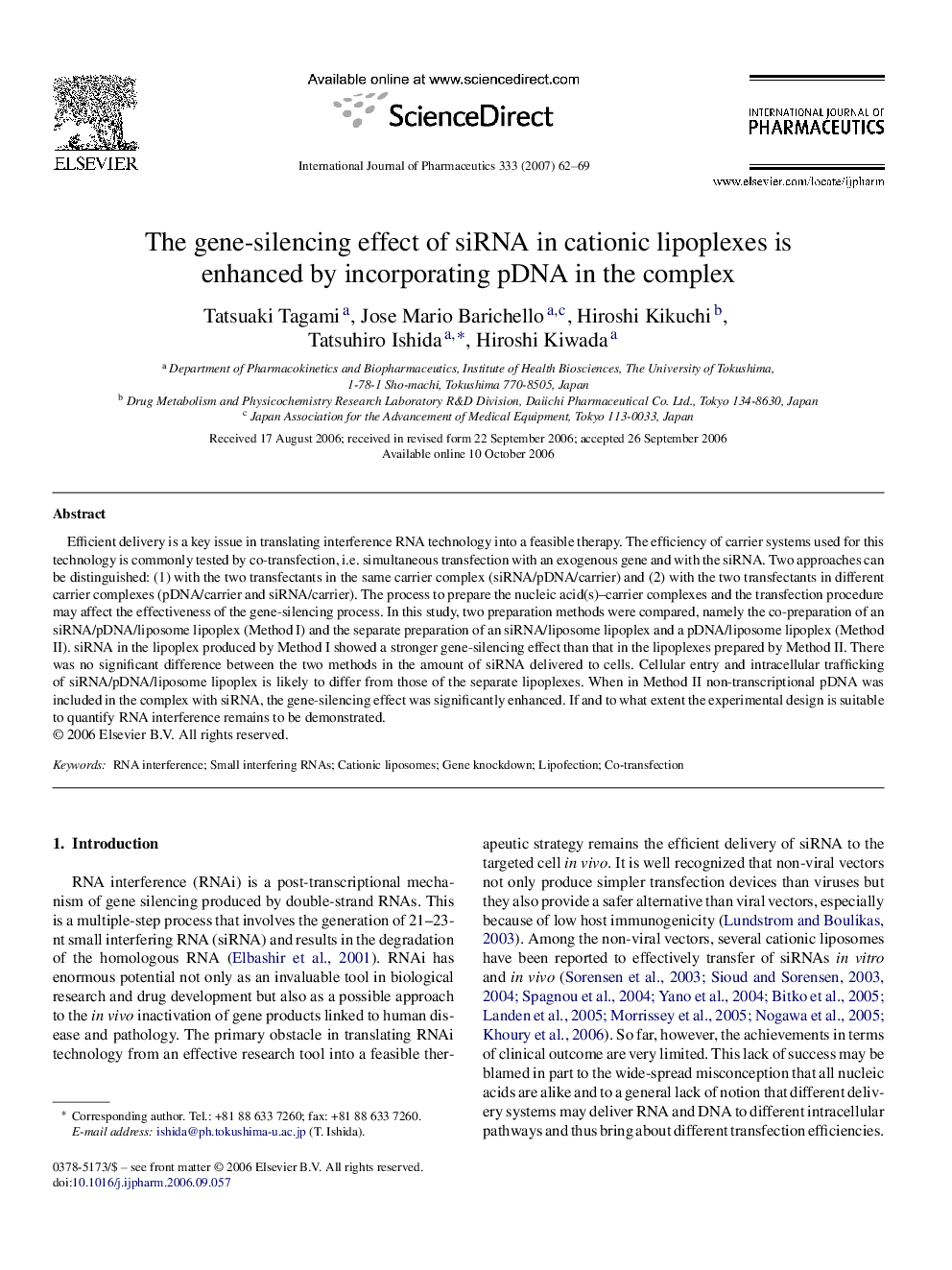| Article ID | Journal | Published Year | Pages | File Type |
|---|---|---|---|---|
| 2506423 | International Journal of Pharmaceutics | 2007 | 8 Pages |
Efficient delivery is a key issue in translating interference RNA technology into a feasible therapy. The efficiency of carrier systems used for this technology is commonly tested by co-transfection, i.e. simultaneous transfection with an exogenous gene and with the siRNA. Two approaches can be distinguished: (1) with the two transfectants in the same carrier complex (siRNA/pDNA/carrier) and (2) with the two transfectants in different carrier complexes (pDNA/carrier and siRNA/carrier). The process to prepare the nucleic acid(s)–carrier complexes and the transfection procedure may affect the effectiveness of the gene-silencing process. In this study, two preparation methods were compared, namely the co-preparation of an siRNA/pDNA/liposome lipoplex (Method I) and the separate preparation of an siRNA/liposome lipoplex and a pDNA/liposome lipoplex (Method II). siRNA in the lipoplex produced by Method I showed a stronger gene-silencing effect than that in the lipoplexes prepared by Method II. There was no significant difference between the two methods in the amount of siRNA delivered to cells. Cellular entry and intracellular trafficking of siRNA/pDNA/liposome lipoplex is likely to differ from those of the separate lipoplexes. When in Method II non-transcriptional pDNA was included in the complex with siRNA, the gene-silencing effect was significantly enhanced. If and to what extent the experimental design is suitable to quantify RNA interference remains to be demonstrated.
